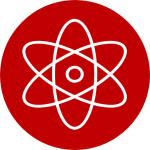THE UK ELECTRICITY SYSTEM AN OPPORTUNITY FOR CHANGE
The UK electricity system is one of the most sophisticated in the world, a complex machine with many moving parts. Previously, large coal, gas and nuclear power plants were the main source of electricity, dominating the UK electricity generation market. These plants were relatively easy to control and could be turned up or down in response to national demand.
As new forms of generation are progressively replacing traditional plants, thousands of decentralised generators are changing the pattern of electricity flows. As the flow of electricity is getting more complex, the National Grid ESO works together with the energy industry to continuously find ways to innovate, invest and adapt the electricity system to keep electricity flowing reliably to consumers across the country.
As the UK transitions to net-zero carbon emissions, there is an increased demand for power solutions that are renewable, sustainable and stable. This rapid switch from base-load fossil-fuel/large-scale gas to flexible power gas and renewable sources such as wind and solar means the national grid faces increased instability due to a lack of consistency of wind and solar energy and base-load power requirements.
To stabilise the national grid, the UK has turned to flexible power plants that are small, adaptable and produce stable, low-emission electricity immediately when there is a supply shortage, resulting in a growing and dynamic market for small-scale power generation and storage. These solutions offer both variety and supports the regulatory regime to help balance the UK national grid network and alternative generation sources while providing limited risk for investors.
WHAT IS FLEXIBLE POWER?
FLEXIBLE POWER IS THE PROCESS OF TIMING ENERGY SUPPLY SO IT CAN BE USED DURING PERIODS OF PEAK DEMAND.
Smaller grids can only manage smaller power plants, requiring peaking plants to be installed in areas of need
Plants comprise multiple small reciprocating engine gensets
(1.5 – 4 MW) housed in containers that include noise abatement
and control systems
Plants are unmanned with remote dispatch of gensets through data connection
Flexible power plants are distinct from other types due to specific characteristics that include:

Small, gas-fired power plants less than 20 MW in size (diesel is also possible but produces high emissions)

Remotely dispatchable, i.e., can be turned on and off quickly to generate power on demand

Essential for when a system needs additional power quickly due to loss of generation or an increase in demand

Able to supply power rapidly, with a reaction time of under 2 minut

Able to run for long periods continuously

Operates for a limited number of hours per year (up to approximately 4,000)
THE MED STRATEGY AND BUSINESS MODEL
Mast Energy Developments PLC’s (MED) strategic intent is to acquire, develop and operate multiple small-scale flexible-power generation plants, with a goal to reach a 300 MW portfolio over the next 36 to 58 months. To achieve this, our business model is based on the following:
- Investing in small-scale flexible-power sites that respond to the needs of an evolving energy market
- Optimising costs and time to commissioning
- Remaining flexible on stages of completion
- Securing supportive offtake agreements and long-term contracts.
THE MED EXECUTION PROCESS
At MED, the structure of project teams follows a highly specific procedure to optimise efficiency and maximise revenue. Once a project has been commercialised, an Operations Team is established for responsibility of the project site. The estimated target development timeline from acquisition to production is 9 to 12 months.